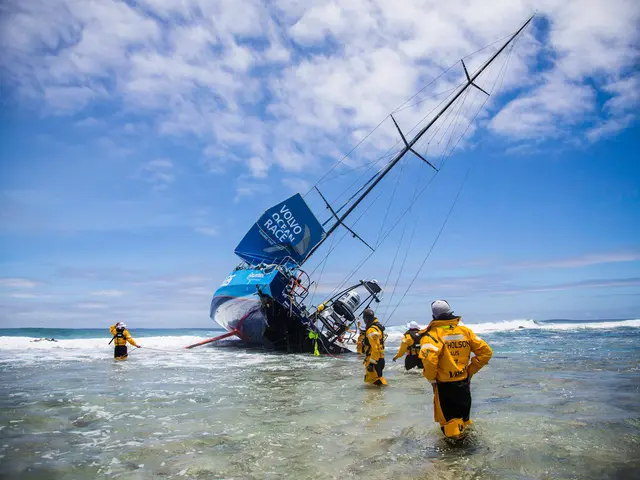Defense Department Encouraged to Maintain Pace with Advanced Engine Technology by GE
The Navy's ambitious F/A-XX next-generation fighter program, intended to replace the F/A-18E/F Super Hornet and complement the F-35C Lightning II, is currently in a state of limbo due to budgetary constraints and strategic priorities.
The program has received minimal funding, with only $74 million allocated for the current fiscal year to preserve the design concept, but not to actively progress with development. This has led the Navy to propose delaying F/A-XX development to focus on immediate needs, reflecting budget limitations. There were even reports of potentially redirecting $500 million from F/A-XX to the F-47 program, highlighting the Air Force's sixth-generation fighter's prioritization.
The White House has emphasized that the Air Force's F-47 program is being prioritized over the F/A-XX. Funding F/A-XX as currently planned could delay the F-47 program. Congressional efforts to advance F/A-XX might also hinder the F-47 timeline, as the industrial base is only capable of supporting one high-priority sixth-generation fighter program at a time.
However, the Navy aims to leverage technological advancements from the F-47 program for future F/A-XX developments, maintaining the long-term viability of a next-generation carrier-based fighter. One such advancement is the adaptive engine technology being developed for the F/A-XX, which offers more acceleration for fighter maneuvers and reduced fuel consumption in cruise or loiter modes.
The F/A-XX is envisioned to enter service in the 2030s, but significant progress has been stalled due to current priorities and funding decisions. The program's requirements include advanced stealth, sensors, and multi-role capabilities. The F/A-XX is described as a "critical component" of the "air wing of the future" by the Navy.
GE, a key player in the F/A-XX program, represents Italy as an equal propulsion partner with the U.K. and Japan in the Global Combat Air Program, a partnership between those countries to develop a sixth-generation fighter. H. Lawrence Culp, CEO of GE Aerospace, is urging the Pentagon to proceed with the Navy F/A-XX fighter program.
Congress has allocated $750 million for the F/A-XX in the recent reconciliation package, and the Navy has included the F/A-XX in its annual Unfunded Priorities List, requesting $1.4 billion for the project. GE has made significant investments in test infrastructure at select manufacturing sites for conducting higher mission-relevant testing in the hypersonic arena.
Despite the delays, Lockheed Martin's CEO, Jim Taiclet, suggests using a souped-up F-35 as a bridge to the F-47 due to potential delays, as the F-47 may not be ready for five to 10 years. The Air Force's competitive NGAP development effort is now expected to be ready for the F-47 in mid-2030, a delay from its original timeline in late 2027.
The Navy recognizes the need for a sixth-generation fighter for operating in highly contested environments. As the F/A-XX program continues to navigate budgetary challenges and strategic priorities, its potential service date remains set for 2035.
- The Air Force's F-47 program, another sixth-generation fighter, is currently prioritized over the Navy's F/A-XX, with funding potentially being redirected from F/A-XX to F-47, demonstrating the Air Force's focus.
- The Navy aspires to integrate technological advancements from the F-47 program into future F/A-XX developments, ensuring the long-term viability of a next-generation carrier-based fighter.
- The Pentagon has received an urge from GE Aerospace, a key player in the F/A-XX program, to proceed with the development of the Navy F/A-XX fighter program.
- Despite the recent allocation of $750 million for the F/A-XX, the program's service date remains set for 2035, highlighting the ongoing budgetary challenges and strategic priorities that continue to impact its development.








